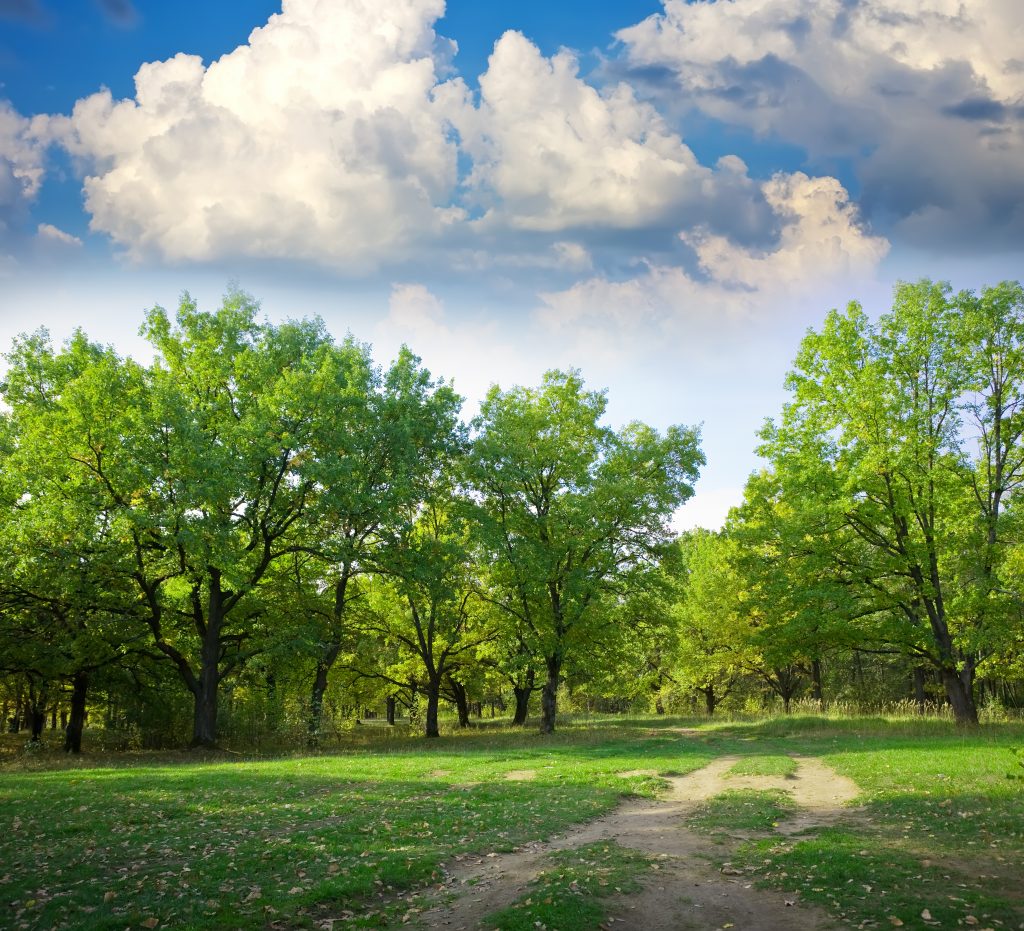Common tree diseases are ailments that affect the health and vitality of trees, potentially leading to leaf discoloration, defoliation, weakened structures, and even tree death. These diseases are often caused by pathogens such as fungi, bacteria, viruses, or environmental stressors. Understanding these diseases is crucial for early detection and effective management. Here is an extensive explanation of some common tree diseases:

Dutch Elm Disease (DED):
- Caused by the fungus Ophiostoma ulmi and Ophiostoma novo-ulmi.
- Affects elm trees, leading to wilting, yellowing, and browning of leaves, ultimately causing tree death.
- Transmitted by elm bark beetles and through root grafts between infected and healthy trees.
Oak Wilt:
- Caused by the fungus Bretziella fagacearum.
- Primarily affects oak trees, leading to wilting, browning, and shedding of leaves.
- Transmitted through root grafts between trees and by insects that feed on sap.
Fire Blight:
- Caused by the bacterium Erwinia amylovora.
- Affects a variety of trees, including apple, pear, and ornamental species.
- Symptoms include wilting, blackening, and curling of leaves, resembling the effects of fire.
- Spread through rain, wind, and insects.
Anthracnose:
- Caused by various fungi such as Colletotrichum and Gnomonia species.
- Affects many deciduous trees, causing irregular brown spots, defoliation, and twig dieback.
- Thrives in wet conditions and spreads through rain splashes.
Powdery Mildew:
- Caused by various fungi belonging to the Erysiphaceae family.
- Creates a powdery, white or gray growth on leaves, inhibiting photosynthesis and weakening the tree.
- Common in humid conditions.
Chestnut Blight:
- Caused by the fungus Cryphonectria parasitica.
- Devastated American chestnut trees in the early 20th century.
- Results in cankers, leaf wilting, and bark peeling, leading to tree death.
Needle Cast Diseases:
- Caused by fungi such as Rhizosphaera and Lophodermium species.
- Affect conifers, causing needle discoloration, premature shedding, and reduced growth.
- Spread through rain and wind, thriving in humid conditions.
Phytophthora Root Rot:
- Caused by various species of the Phytophthora genus.
- Affects a wide range of trees, causing root decay, wilting, and reduced vigor.
- Thrives in waterlogged or poorly drained soils.
Apple Scab:
- Caused by the fungus Venturia inaequalis.
- Affects apple trees, leading to scab-like lesions on leaves, fruits, and stems.
- Favored by wet weather and spreads through rain splashes.
Sooty Mold:
- Caused by fungi that grow on honeydew secreted by sap-feeding insects like aphids.
- Creates a black, powdery coating on leaves, inhibiting photosynthesis and weakening the tree.
Early detection, proper tree care practices, and, if necessary, treatment with fungicides or other appropriate methods can help manage and prevent the spread of these common tree diseases. Regular inspection by certified arborists is recommended to maintain the health and vitality of your trees.
Treating common tree diseases involves a combination of preventive measures, cultural practices, and targeted treatments to manage the spread of diseases and promote tree health. Here is an explanation of the general procedures to effectively treat common tree diseases:

- Identification:
- Accurate identification of the disease is crucial before implementing treatment.
- Consult certified arborists or local agricultural extension services for expert diagnosis.
- Cultural Practices:
- Maintain proper tree care practices, such as regular watering, mulching, and appropriate fertilization.
- Ensure proper planting techniques to reduce stress on trees.
- Pruning:
- Remove infected branches, leaves, or fruits to prevent the spread of pathogens.
- Pruning improves air circulation and reduces the disease’s favorable conditions.
- Sanitation:
- Clean up fallen leaves, fruits, and debris around the base of the tree to eliminate disease reservoirs.
- Dispose of infected materials properly to prevent reinfection.
- Fungicides:
- For severe cases, apply fungicides according to recommended schedules and instructions.
- Use environmentally friendly and registered fungicides.
- Follow label instructions closely to ensure effective and safe application.
- Biological Controls:
- Introduce beneficial microorganisms or insects that naturally suppress the disease-causing pathogens.
- Promote a balanced ecosystem to enhance natural disease resistance.
- Resistant Varieties:
- Choose tree species or varieties that are naturally resistant to specific diseases prevalent in your area.
- Planting resistant trees reduces the risk of infection.
- Soil Improvement:
- Improve soil drainage and aeration to prevent root rot diseases.
- Avoid overwatering and compacted soil, which create favorable conditions for disease development.
- Preventive Treatments:
- Apply preventive fungicides during periods of high disease risk, following recommended schedules.
- These treatments create a barrier against infection.
- Monitoring and Follow-Up:
- Regularly inspect trees for signs of improvement or worsening of the disease.
- Adjust treatment strategies based on observations and expert recommendations.
- Professional Consultation:
- Seek advice from certified arborists or horticulturists who specialize in tree health.
- They can recommend tailored treatment plans based on the specific disease and tree species.
- Record Keeping:
- Maintain records of treatments, observations, and outcomes for future reference.
- This helps track the effectiveness of treatments and informs future disease management decisions.
- Integrated Pest Management (IPM):
- Implement a holistic approach that combines various strategies to manage tree diseases effectively.
- IPM considers cultural practices, biological controls, and chemical treatments as needed.
Remember that prevention and early intervention are key to successfully treating common tree diseases. Regular monitoring, proper care, and timely treatment will help maintain tree health and reduce the impact of diseases on your landscape. Consulting with professionals ensures informed decisions and the use of appropriate treatment methods.
Identifying and treating common tree diseases requires careful observation, accurate diagnosis, and targeted treatments. Here’s a comprehensive guide on how to effectively identify and treat these diseases:

- Identification:
- Familiarize yourself with common tree diseases in your region.
- Observe changes in foliage color, texture, and overall tree appearance.
- Look for signs of wilting, cankers, lesions, abnormal growths, or discoloration.
- Consult Professionals:
- If unsure, seek advice from certified arborists or local agricultural extension services.
- They can provide accurate disease identification and treatment recommendations.
- Early Detection:
- Regularly inspect trees for any signs of disease, especially during growing seasons.
- Detecting diseases early improves treatment success.
- Leaf Analysis:
- Examine leaves for spots, lesions, holes, curling, or discoloration.
- Leaf symptoms often provide clues about the disease’s nature.
- Trunk and Bark Examination:
- Check for cankers, cracks, peeling bark, or oozing sap.
- These symptoms may indicate diseases affecting the trunk.
- Presence of Pests:
- Inspect for the presence of insects, fungi, or other pests on leaves, branches, and trunks.
- Some diseases are associated with specific pests.
- Soil and Root Health:
- Assess the condition of the soil and roots.
- Unhealthy roots can contribute to disease susceptibility.
- Treatment Steps:
- Once identified, follow these steps to treat common tree diseases:
- Pruning:
- Trim and remove infected branches, leaves, or fruits.
- Dispose of these materials properly to prevent further spread.
- Sanitation:
- Clear fallen leaves and debris from around the base of the tree.
- Reduces disease reservoirs and prevents reinfection.
- Fungicides:
- Apply appropriate fungicides as recommended by experts.
- Follow instructions for mixing and application carefully.
- Preventive Measures:
- Implement cultural practices like proper watering, mulching, and fertilization to maintain tree health.
- Preventive treatments may include applying fungicides during high-risk periods.
- Biological Controls:
- Introduce beneficial organisms that naturally combat pathogens.
- Enhances the tree’s natural defenses.
- Resistant Varieties:
- Choose tree species or varieties resistant to prevalent diseases.
- Plant resistant trees to reduce susceptibility.
- Professional Advice:
- Consult certified arborists for customized treatment plans.
- They can provide expertise based on the specific disease and tree species.
- Monitoring:
- Continuously observe the tree’s condition after treatment.
- Adjust treatments as needed based on improvements or worsening symptoms.
- Record Keeping:
- Maintain records of treatments, observations, and outcomes.
- Helps track progress and informs future disease management strategies.
Remember that proper disease identification is essential for effective treatment. Timely action and a combination of strategies, including pruning, sanitation, fungicides, and cultural practices, will help control and manage common tree diseases, promoting the health and longevity of your trees.
If you need a tree service in Utah, you can call:
Truco Services, Inc.
4640 Commerce Drive
Murray, Utah 84107
(801) 466-8044
https://truetreeservices.com/


Comments are closed.